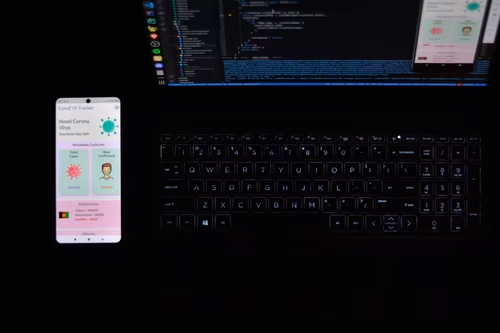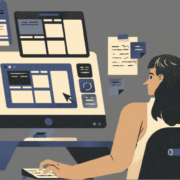Flutter Releases Version 2.8: New Features You Should Know
Google has released a new version of Flutter that includes new features and enhancements. Flutter is one step closer to robust desktop compatibility with its innovative features and improvements. Flutter is a single SDK covering mobile, web, and desktop development.
Thank you for reading this post, don't forget to subscribe!Flutter version 2.8 is mainly concerned with mobile performance. The camera and web plugins received significant improvements in the current edition. The most recent upgrade also makes it easier to link apps to backend services like Firebase and Google Cloud.
Flutter provides a framework that is both high-performing and productive. Developers can target numerous platforms for mobile app development using a single codebase. For developers, capabilities like hot reload are highly handy. This release includes a sign-in widget that leverages Firebase for Authentication.
Flutter DevTools
Address debugging concerns this release introduces an “Enhance Tracing” functionality. It will aid developers in resolving UI stemming issues. When any tracing features are enabled, new events for widgets produced, render objects laid out, and render objects painted will be added, as needed.
In addition, DevTools now includes functionality for profiling the starting performance of your program. When you load the app start profile by pressing the “App Start Profile” button, you’ll notice that the AppStartUp user tag is selected. This profile provides CPU samples from the Dart VM’s initialization to the rendering of the Flutter frame.
You may also load your app’s launch profile by selecting this user tag filter from the list of available user tags. The profile info will be displayed when you activate the app if you choose this day.
Web Platform Views
The new release also improves the performance of platform views for flutter web. Platform views enable Flutter experts to host UI components. Then, the Flutter web implements UI components using the HtmlElementView widget.
This widget can host HTML components within your Flutter web app. Users will be presented with platform views by default when utilizing the online versions of the google maps flutter plugin or the video player plugin.
A new canvas is produced when you embed the platform view in the previous version. Each time you add the platform view, a new canvas will be designed. Because each canvas is the size of a whole window, these extra canvases are costly to make. Canvases produced for previous platform views are reused in this release.
Removing the Dev Channel
The Flutter channels define when the framework and engine change on your development machine. The master version represents the highest churn, while the stable version represents the smallest. Developers have lately stopped updating the app development channel due to resource restrictions.
About 3% of Flutter developers use the dev channels. It is because Flutter engineers devote a significant amount of time and effort to keeping it up to date. Dropping the channel frees up time and energy for the Flutter team to focus on other projects. As a result, all the developers have determined to begin the formal termination of the dev channel.
The main reason behind stopping the channel is that they need to spend a wholesome amount of time and energy to maintain it. Developers have given the following options to choose a Flutter channel.
Stable: These channels consist of the best quality builds. These are mainly published quarterly and considered as fixes against any serious issues.
Beta: It is the second option to the stable channels. It is targeted at users that want immediate support.
Master: It is an active development channel. It is targeted at Flutter experts or contributors who can deal with volatile code.
As Flutter developers are going to end the developer channel, it is recommended for the developers to rely on the beta and master channels for the support.
Game Development Using Flame
The majority of developers believe Flutter is only for app development. On the other hand, many developers are using Flutter to create games. Developers are using Flutter’s hardware-accelerated graphics support from various communities.
Flame contains everything you need to quickly develop your game, including a component system, animated sprites and graphics, collision detection, a worlds camera, and much more.
Flame provides services for 2D game production when combined with other platforms. Flame can be extended with additional packages by interfacing with other libraries. Flame, for example, can be combined with other packages such as Rive, Forge2D, Fire Atlas, and so on.
GA of Flutter Ads
The Google Mobile SDK for Flutter app development will be generally made available in November. This version supports five ad formats. Moreover, it integrates well with the AdMob and Ad Manager.
This edition contains a beta of a new mediation feature to assist you to optimize ad performance. To know in detail related to Google Ads and Flutter app integration, check out the official website.
Enhancements in DartPad
There is an excellent refinement in DartPad. It now supports a vast number of packages. About 23 packages are available for import. These include packages like google-fonts, characters, bloc, and more.
In the latest stable version of Flutter, you can utilize a New Channel menu from the status bar to choose the most recent beta channel release and the last stable version.
Firebase with DartPad
Due to the initialization of FlutterFire, developers have the opportunity to utilize Firebase with DardPad. The combined power of DartPad Firebase offers support for core API, authentication, and Firestone.
Moreover, it is anticipated that more Flutter services will be available on Firebase soon.
Firestore Object/Document Mapping
Last but not least, the alpha version of foreshore object/DocumentMapper, a new Firebase and Flutter integration functionality you should be aware of. The Firestore ODM makes it easier for Flutter developers to use Firestore by providing type-safe, organized objects and functions.
Firestore ODM simplifies the syntax for working with documents and collections with code generation, and it allows users to model data in a type-safe manner. Strongly typed subcollections are also supported by the ODM, which has built-in options for optimizing widget rebuilds specific features.
Wrapping Up
It would help if you had a good understanding of the new features in Flutter 2.8 for your projects.
If you want to integrate these features in your existing project or develop a new one, reach out to the best Flutter app developers providing excellent services. As they have years of experience building mobile apps for clients worldwide, they can understand your needs and deliver the best solution.












